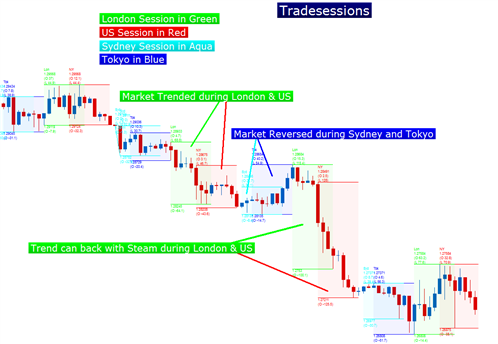The Foreign Exchange Market (Forex) is where millions of traders worldwide invest capital to profit from price movements in various currency pairs. GBP/USD, or British Pound versus US Dollar, is one of the most liquid and actively traded currency pairs. In this article, we will cover essential information about technical analysis for cable trading, including how to read a chart, identify critical levels and patterns, and track the trends of GBP/USD over time.
Whether you are a beginner looking to learn more about Forex trading or an experienced trader wanting to take advantage of market opportunities with your cable trades, understanding how technical analysis works can help you make profitable trades in any economic climate.
Introducing the Basics of Technical Analysis for Cable Traders
As a cable trader, understanding technical analysis is paramount to success. Technical analysis refers to the use of historical price patterns and market activity to identify potential price movements in the future. It is a critical aspect of trading that can help you determine when to buy or sell your positions. Technical analysis involves using charts, trend lines, indicators, and other tools to analyse market data.
To make the most out of technical analysis, one must understand basic concepts such as support and resistance levels, trend lines, and moving averages. By combining these concepts with technical indicators, traders can anticipate future price movements and make informed decisions. With a solid foundation in technical analysis, cable traders can have a valuable tool to rely on in their trading strategies. Find out more about cable here.
Understanding Support and Resistance Levels
Support and resistance levels are essential concepts in technical analysis that help traders identify critical levels where GBP/USD may react. Support levels refer to a level at which the price tends to find support as it falls, while resistance levels refer to a level at which the price encounters resistance as it rises. These levels can act as barriers, preventing the price from moving beyond a certain point. As traders, it is crucial to identify these levels as they can help us determine when to enter or exit trades.
When a support level is broken, it can potentially turn into a resistance level, and vice versa. This phenomenon is known as “support turned resistance” or “resistance turned support.” The more times a price bounces off a particular support or resistance level, the more significant that level becomes. In other words, a support or resistance level is considered more substantial when tested multiple times.
How to Identify Patterns on GBP/USD Charts
Another essential element of technical analysis is identifying patterns on charts. These patterns can provide valuable information about potential price movements and be used to make trading decisions. Some common chart patterns in technical analysis include head and shoulders, double tops and bottoms, flags and pennants, and triangles.
The head and shoulders pattern occurs when the price rises to a peak (left shoulder), falls, and then rises again to a higher peak (head) before falling again. The final rise in price is lower than the previous peak, forming the right shoulder. This pattern can indicate a potential reversal in the trend from bullish to bearish. Double tops and bottoms are similar to head and shoulders patterns but consist of two peaks or valleys instead of three. They can also signal a potential trend reversal.
Flags and pennants are typically found in the middle of an uptrend or downtrend. They are formed by a sharp price movement followed by a consolidation period before continuing in the direction of the initial move. These patterns can be helpful for traders to enter trades at crucial levels. Triangles occur when the price creates higher lows or lower highs, forming a series of ascending or descending trend lines. This pattern can indicate a potential breakout in either direction, and traders can use it to enter trades accordingly.
Using Indicators to Make Better Trading Decisions
In addition to support, resistance levels, and chart patterns, traders can utilise technical indicators to analyse GBP/USD trends. These indicators use mathematical calculations based on historical price data to identify trades’ potential entry or exit points.
Common technical indicators cable traders use include moving averages, the Relative Strength Index (RSI), and MACD (Moving Average Convergence Divergence). Moving averages are used to identify the market’s overall trend, while RSI and MACD can indicate overbought or oversold conditions in the market. By combining these indicators with other technical analysis tools, traders can better understand GBP/USD trends and make better-informed trading decisions.
Enhancing Your Trading Strategy by Analysing Volume
In addition to technical analysis, volume can provide valuable insights into market activity and help traders refine their strategies. Volume refers to the number of shares or contracts traded in a particular security or market. In Forex trading, volume is measured by the number of lots traded.
An increase in volume often indicates significant market interest in a particular currency pair. In contrast, a decrease in volume can indicate a lack of interest or a potential change in market sentiment. Traders can use volume analysis to confirm trends and identify potential breakouts or reversals.


